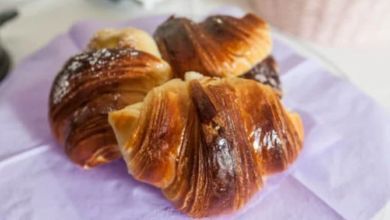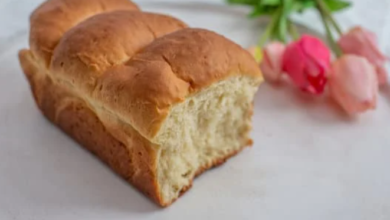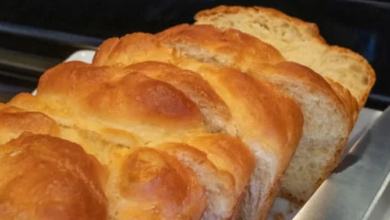Brioche Troubleshooting: Why is My Dough Not Fluffy?

What To Know
- Brioche is a type of bread that is made from a dough that is enriched with eggs and butter.
- Second, if the dough is over-kneaded, the gluten will form a tight network that will prevent the yeast from rising and create a heavy loaf.
- Third, if the dough is baked at too high a temperature, it will quickly brown on the outside before the yeast has had a chance to work and make the bread light and fluffy.
Brioche is a traditional French bread. It consists of a rich dough that is filled with butter, eggs, and sugar. Basically, it’s a sweet, airy, and buttery yeast dough that has a delicious flavor. But why is my brioche not fluffy? This article will look at some of the reasons why brioche may not be fluffy.
What is brioche?
Brioche is a type of bread that is made from a dough that is enriched with eggs and butter. The dough is kneaded and then allowed to rise before it is shaped into loaves. Brioche can also be made into rolls or small loaves. The bread is then baked until it is golden brown.
Why is my brioche not fluffy?
There can be a few reasons why your brioche dough isn’t as fluffy as you’d like.
One possibility is that the dough is too wet. Brioche dough should be soft but not so wet that it’s difficult to work with. Another possibility is that the dough is too dry. In this case, you may need to add a bit more liquid until the dough reaches the desired consistency. A third possibility is that the yeast wasn’t fresh enough and didn’t rise properly. If this is the case, you’ll need to start over with fresh yeast.
No matter what the reason, troubleshooting brioche dough can be tricky. If you’re not sure what’s causing the problem, it’s best to consult a professional baker for advice.
What are some causes of brioche that is too dense?
There are a few reasons why brioche can be dense. First, if too much flour is used in the dough, it will be heavy and not rise well. Second, if the dough is over-kneaded, the gluten will form a tight network that will prevent the yeast from rising and create a heavy loaf. Third, if the dough is baked at too high a temperature, it will quickly brown on the outside before the yeast has had a chance to work and make the bread light and fluffy.
Can you overproof brioche dough?
There are many questions in the baking world that have yet to be answered. Can you overproof brioche dough? Is it really necessary to use a bread machine to make brioche? What is the best way to store brioche?
Despite the fact that these questions may never be fully answered, there are some general tips and guidelines that can help you produce better results when baking. For example, when it comes to overproofing brioche dough, it’s important to know that this will result in a heavier, denser loaf. If you’re looking for a light and fluffy brioche, then it’s best not to let the dough rise too much.
Why is it important to knead brioche?
When making brioche dough, it is important to knead it well. Kneading the dough helps to develop the gluten in the flour. This helps to create a light and fluffy pastry. Kneading also helps incorporate the butter and eggs into the flour, which results in a better texture for the brioche.
How do I improve my brioche?
Brioche is a type of bread that is made with eggs, butter, and yeast. It can be a little tricky to make at first, but with a few tips, you can improve your brioche dough.
- First, make sure that your ingredients are at room temperature before beginning to mix the dough. This will help the ingredients blend together more easily.
- Second, use a mixer with a paddle attachment to mix the dough. This will help to aerate the dough and create a light and fluffy texture.
- Third, let the dough rise for at least 2 hours before shaping it into rolls or loaves. This will give the dough time to develop its flavor and texture.
- Fourth, bake the brioche in a preheated oven at 350 degrees F for about 20–25 minutes. Let the brioche cool before serving.
Conclusion
In conclusion, there are several reasons why your brioche may not be fluffy. The dough may be too wet or dry, the oven may not be hot enough, or you may have overproofed the dough. However, with a little practice, you will be able to make the perfect brioche every time!



